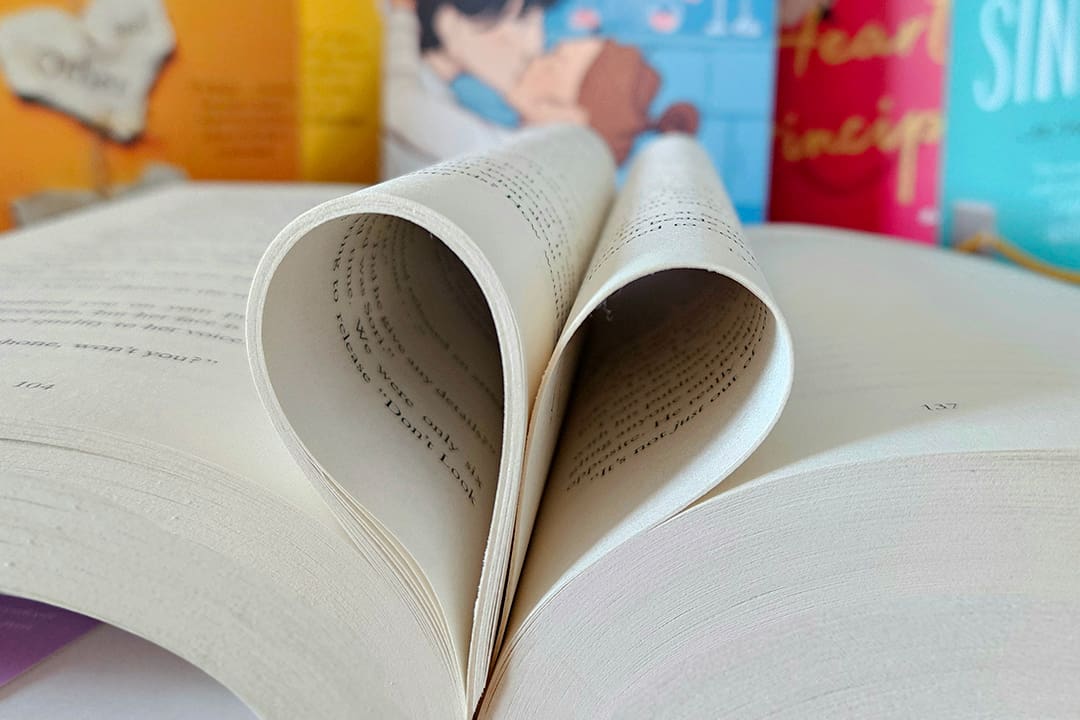Content warning: This article discusses books with graphic content.
As an avid reader, an innocent scroll through my various social media accounts usually results in my exposure to dozens of book-related videos. I often engage with posts about popular romance novels, indulging in happily-ever-afters and some of the internet’s favourite fictional male crushes, deemed “book boyfriends.”
I’m not alone in this hobby. As of February 10, 2024, the TikTok tag “#BookTok” has over 225.1 billion views. Also, interest in romance novels has surged within the past few years. In a 2023 report, BookNet Canada reported a 42 per cent increase in the sale of romance novels from 2017 to 2022.
Romance Writers of America defines a romance novel as containing two main components: a central love story and a satisfying ending. As a genre, romance has been facing criticism since its beginning, largely because it is a women-dominated genre. The misogyny involved in this presents itself through an assumption that romance novels are poorly written and in descriptions of them as “trashy” and “fluffy.” I believe that we need to keep that misogyny in mind — the misogyny that fuels the scrutiny the romance genre receives — when critiquing romance novels.
The recent increased public interest in romance novels has made me wonder how much of the criticism I’ve seen against the romance genre stems from misogyny, and how much of it carries real merit. I argue that before we criticize romance novels, we must unpack how we’re influenced by the preconceived notions we create of what a book contains based on its genre. We need to recognize the potential inaccuracy of genres as labels — and how genres, when labelled properly, can act as content warnings for novels.
Genres may fail to indicate the contents of novels
In Romance Fiction: A Guide to the Genre, author Kristin Ramsdell addresses how genre classification is important in guiding readers’ choices. Ramsdell writes that measures other than a novel’s genre are necessary to determine its contents because, while genre is meant to be a label that indicates the contents of a novel, we cannot always rely on its accuracy as a predictor.
Consider the reception of Colleen Hoover’s novel It Ends With Us, a book categorized as “Romance” by Goodreads. Hoover’s novel depicts themes of physical, sexual, and emotional abuse. Morality criticisms across social media alleging Hoover is normalizing and glorifying abuse in the book hone in on the fact that the abusive behaviours depicted are central to the love story in the novel.
One Goodreads reviewer, marta the book slayer, wrote, “How dare you categorize this as a romance? What about a novel that contains domestic abuse, child neglect, gun violence, suicide attempts and attempted rape screams ROMANCE to you?” Another reviewer, Ilhaam, wrote, “This isn’t a romance but half of booktok are not ready for that conversation.”
These reviews make one thing clear to me: genre matters when it comes to our book expectations.
Genres can act as content warnings
A subgenre of romance called “dark romance” reflects the significance of labelling genres accurately and how that affects our expectations of the books they comprise. This subgenre is defined as romance novels incorporating darker themes into their plots. Characteristics of dark romance novels include morally grey characters, trauma, and violence.
It’s no surprise to me that aspects of dark romance have garnered moral criticisms. In an interview for NPR, author Ana Huang explains how dark romance fans understand many of the themes in these novels as immoral but choose to enjoy them critically regardless. Huang believes people can engage with books with content they wouldn’t condone in real life.
It seems to me that understanding what the dark romance genre entails is essential to enjoying the genre. Huang states that the content featured in dark romance would be jarring to encounter in a lighter romance novel, but that dark romance readers go into a novel in the headspace necessary to engage with darker themes. This headspace seems to entail a preconceived idea of the genre, and an understanding of the ‘darker’ themes that will be present within a novel.
In the same NPR interview, another dark romance author, Rina Kent, addresses the double standards between content made for audiences who are men and those who are women. Kent believes that misogyny factors into this because some see dark romance fans as ‘morally incorrect,’ while the fans of horror novels written by men like Stephen King aren’t usually as scrutinized.
I believe both Huang and Kent raise important points. If readers can enter a novel with realistic and accurate expectations, I don’t see enjoying dark romance as immoral. The two authors’ arguments touch on how the only thing that differentiates dark romance novels from crime and horror novels is the romantic aspect that is expected to draw women readers. I see this to be clearly connected to the misogyny inherent in the condemnation of romance novels.
In criticizing romance novels, I believe it is important to acknowledge readers’ pre-existing perceptions that stem from both misogyny and the ways genres can fail to indicate content. This isn’t meant to absolve all romance novels of criticism, as I believe conversations surrounding the normalization and glorification of abusive and violent behaviours within the romance genre are important. However, I think it is worth assessing our biases when we analyze the morality of a novel.
Alia Eiras is a first-year student at Victoria College studying social sciences.


